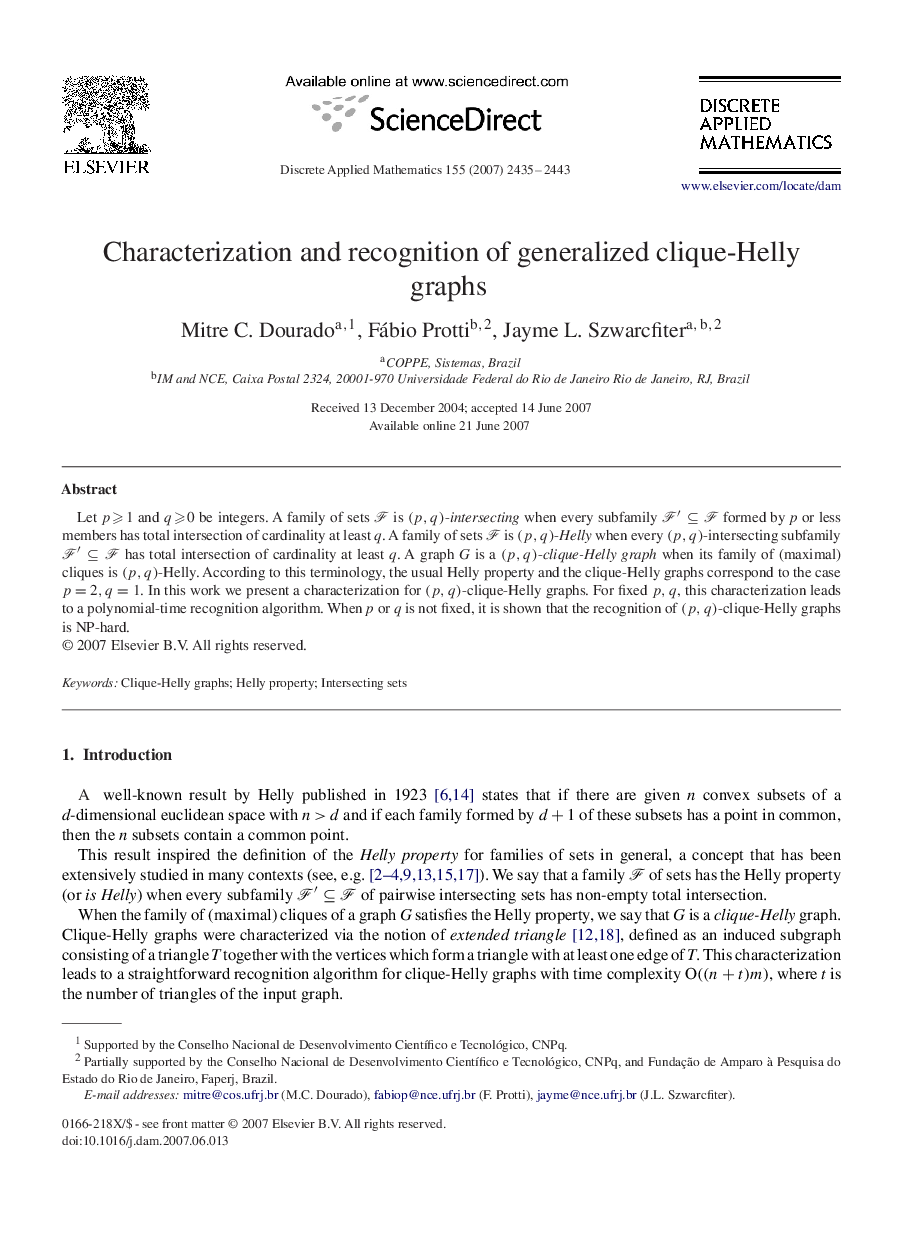| Article ID | Journal | Published Year | Pages | File Type |
|---|---|---|---|---|
| 421410 | Discrete Applied Mathematics | 2007 | 9 Pages |
Let p⩾1p⩾1 and q⩾0q⩾0 be integers. A family of sets FF is (p,q)(p,q)-intersecting when every subfamily F′⊆FF′⊆F formed by p or less members has total intersection of cardinality at least q . A family of sets FF is (p,q)(p,q)-Helly when every (p,q)(p,q)-intersecting subfamily F′⊆FF′⊆F has total intersection of cardinality at least q. A graph G is a (p,q)(p,q)-clique-Helly graph when its family of (maximal) cliques is (p,q)(p,q)-Helly. According to this terminology, the usual Helly property and the clique-Helly graphs correspond to the case p=2,q=1p=2,q=1. In this work we present a characterization for (p,q)(p,q)-clique-Helly graphs. For fixed p,qp,q, this characterization leads to a polynomial-time recognition algorithm. When p or q is not fixed, it is shown that the recognition of (p,q)(p,q)-clique-Helly graphs is NP-hard.
